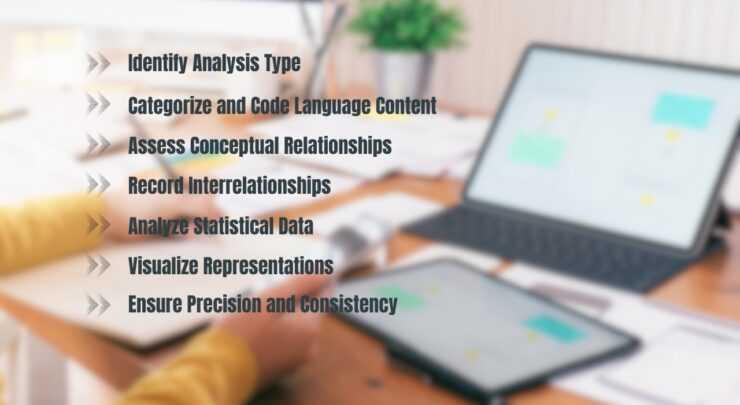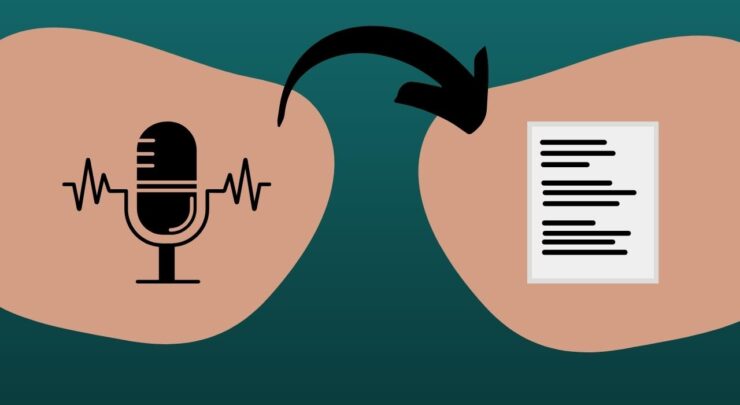Regardless of the field you’re in or the research goals you have, effective and comprehensive analysis is essential to finding accurate information in content. Many researchers spend countless hours gathering and analyzing content, but achieving complete insight with successful conclusions can be a difficult task.
To ensure that your research results in comprehensive analysis, you must go beyond the basics of data collection and utilize the power of translations to make your analysis process more effective.
Maximizing Clarity and Accuracy With Translation Services

Content analysis offers a practical solution by allowing researchers to evaluate text systematically. It involves identifying and quantifying the presence of words, concepts, or themes of interest within a particular content.
This way, researchers can get a better sense of the messages behind the texts and understand how writers or audiences might perceive an issue, as well as how the point of view may subtly shift over time. Below are six imperative steps every researcher needs to take in order to conduct a comprehensive content analysis.
1. Identify Analysis Type
After sampling a set of content, a researcher needs to determine which type of analysis is appropriate for their project. It entails understanding the levels of analysis like sentences, phrases, word sense, and terms, as well as whether they should focus on examining relationships among concepts or terms.
Moreover, a researcher can focus on word counts as a measurement of occurrence and emphasis. Audio resources like audio recordings or videos need a thorough translation and transcription process to understand their content better. They help to keep track of the audio’s data, and the information will be helpful in analyzing content.
2. Categorize and Code Language Content

Researchers need to downsize text into appropriately sized codes and categories. The process pushes researchers to code for word sense (the correct meanings of words) to analyze relevant data.
Categorizing the data helps researchers to identify patterns in literature as well as to decide which individual code (or combination of codes) should be used to look for relationships. Relying on an audio-to-text transcription service helps researchers achieve the transformation of data from the audio content correctly and with the highest possible accuracy.
3. Assess Conceptual Relationships
Since today’s media streams often overwhelm the reader with new ideas and concept presentations, it is crucial to identify how they interact. It includes determining the strength, direction, and sign of the relationship between two or more concepts.
For example, a researcher might want to focus on determining whether the primary motivator of one concept is led by the other or what type of impact it has over another. Whether aligning to the positive or negative perception or dissection of meaning, it is more likely easier to achieve with the assistance of a transcription service.
4. Record Interrelationships
The difference between relational and conceptual analysis lies in capturing the relations or statements among concepts. It requires researchers to code each of these to be easier to comprehend. Scholars need to note pronouncements that may not necessarily appear semantically related but possess relationships with each other.
Since it can be tough to remember and keep track of patterns in content, transcription services can help to ensure that no information or connection is left behind. It also enables researchers to scan through output after the analysis process and determine ties among critical points.
5. Analyze Statistical Data

The modern age of media streams out a lot of data, and understanding all of it is essential for researchers. Statistical analysis ensures no discrepancies in the findings, as it brings out meaningful information from extensive data.
Besides, researchers can track the changes made in language developments, grammatical or syntactical shifts of ideologies, and many more for better understanding. Processing the findings without confusion or misjudgment is easier and faster with transcription services.
6. Visualize Representations
Today, many researchers use visual representation to display and describe the data collected from the content. This helpful method involves mapping out structures such as mental models and decision-making images for other researchers to comprehend the data in a better way.
A clear picture or an understanding of data is hard to obtain without accurate transcriptions, especially from audio content. It can be challenging to verify which statements leave an incomplete representation, which can lead to confusion and misinterpretation of information by the reader.
7. Ensure Precision and Consistency

The penultimate step involves ensuring the accuracy and consistency of translations and transcriptions, which is fundamental to the reliability of content analysis. Any inaccuracy or inconsistency in translation can distort the meaning and interpretation of the analyzed content, leading to unreliable findings.
To maximize precision, researchers should engage professional translation services equipped with experts proficient in the required languages and familiar with the subject matter. This ensures that the translations are not just linguistically accurate but are also contextually correct, maintaining the integrity of the original content.
Equally crucial is the consistency in translation. The same terms and phrases should be translated uniformly throughout the content to avoid any discrepancies. Establishing a glossary of terms and a style guide can aid in maintaining uniformity across translations, ensuring that the same words or phrases are translated consistently.
Moreover, researchers should conduct a meticulous review of the translated content to identify and rectify any errors or inconsistencies. This involves cross-verifying the translations with the original content and making adjustments as necessary to preserve the original meaning and context.
By ensuring precision and consistency in translation, researchers can uphold the clarity and accuracy of the analysis, allowing for credible and reliable insights to be drawn from the content. It underscores the need for meticulous attention to detail and adherence to quality in every step of the translation and transcription process to uphold the validity of research findings
Conclusion
Content analysis is a prominent way for researchers to evaluate a study from all angles. It is necessary for scientific investigations and decision-making on large-scale issues. To get a comprehensive analysis of study findings, researchers need to go beyond the basics of analyzing.
GoTranscript offers professional audio-to-text translation services to assist researchers in expediting the sample content analysis process and ensuring a thorough and accurate transformation of research data. Thus, you can rely on its translation services and benefit from its expertise for an effective analysis process.

